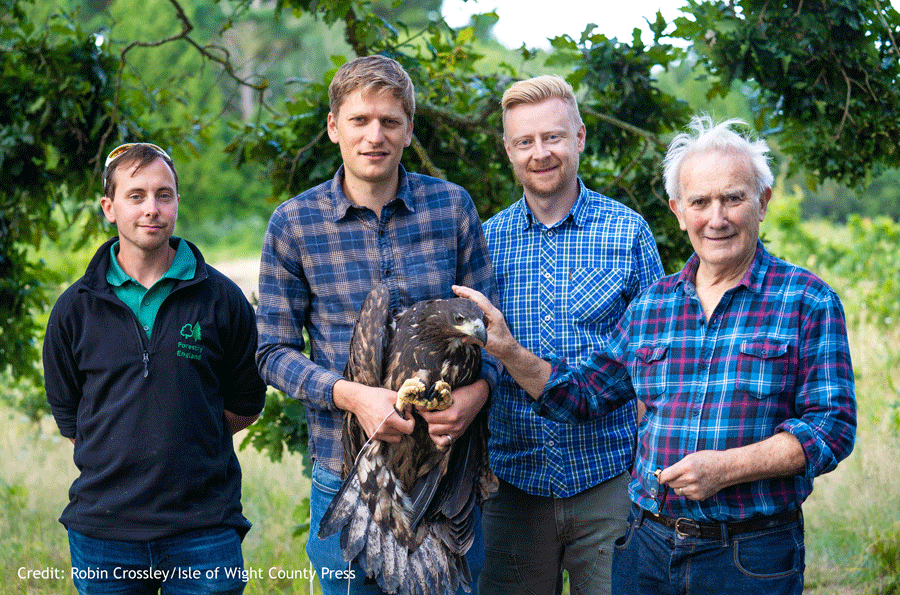First white-tailed eagles released in England
 The first white-tailed eagles to be reintroduced to England have been released on the Isle of Wight. The six young birds, the first to be returned to southern England for 240 years, are part of a five-year programme to restore this lost species led by Forestry England and the Roy Dennis Wildlife Foundation.
The first white-tailed eagles to be reintroduced to England have been released on the Isle of Wight. The six young birds, the first to be returned to southern England for 240 years, are part of a five-year programme to restore this lost species led by Forestry England and the Roy Dennis Wildlife Foundation.
The Isle of Wight was chosen as the location to reintroduce the white-tailed eagles, also known as sea eagles, as it offers an ideal habitat for these coastal loving birds. Areas where the cliff edges have slipped will provide quiet areas for the young birds and its network of cliffs and woodlands will provide potential nesting sites.
The young birds were collected under a Scottish Natural Heritage licence from the wild in Scotland and brought to the Isle of Wight where they have been fed and monitored by a team of experts and dedicated volunteers. All six birds have made good progress and have now been successfully released. Before release, the birds were fitted with small satellite trackers so their progress can be closely monitored.
Roy Dennis, Founder of the Roy Dennis Wildlife Foundation points out that he has spent much of his life working on the reintroduction of these amazing birds and watching them take to the skies over the Isle of Wight was a special moment: “Establishing a population of white-tailed eagles in the south of England will link and support emerging populations of these birds in the Netherlands, France and Ireland, with the aim of restoring the species to the southern half of Europe. The team is pleased that the project fulfills one of the specific aims of the Government’s 25 year Environment Plan,” he said.
Forests important habitat
Forestry England’s South District Forest Management Director, Bruce Rothnie, explains that the diversity of our wildlife is under real pressure with many species now in long-term decline: “The nation’s forests provide an important habitat for wildlife and are playing a critical role in supporting the successful re-establishment of many lost or threatened species,” he said.
Before the reintroduction, a comprehensive feasibility study and public surveys were conducted. A steering group made up of local organisations and members of the community has met and is helping guide the project. It is hoped that the project will also make a significant contribution to the local economy. A similar scheme on the Isle of Mull was found to have boosted its local economy by up to £5 million a year, demonstrating the interest in this iconic bird.
The birds have been reintroduced under licence from Natural England, the Government’s wildlife licensing authority and further releases will take place annually as part of a five-year programme.
Reversing decline of natural environment
Tony Juniper, Chairman of Natural England, hopes that the return of these iconic birds to the Isle of Wight will provide a practical demonstration of the fact that we can reverse the historic decline of our depleted natural environment: “It will also show how helping the recovery of our wildlife can be done at the same time as bringing benefits for people, in this case by offering a boost to the local economy through wildlife tourism, as has happened in Scotland after these birds were reintroduced there back in the 1970s,” he said.
Follow progress of the sea eagles on twitter @SeaEagleEngland.
Photo credit: pictured banner above: Checking one of the eagles prior to release, from left to right, Stephen Egerton-Read; Tim Mackrill; Ian Peak and Roy Dennis. Photo credit: Robin Crossley, Isle of Wight County Press.

